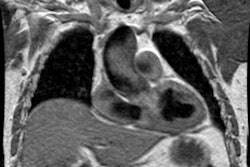Radiographics 1997 May;17(3):579-594. Takayasu arteritis: protean radiologic manifestations and diagnosis.
Matsunaga N, Hayashi K, Sakamoto I, Ogawa Y, Matsumoto T
Diagnosis of Takayasu arteritis is difficult because the clinical features are similar to those of other diseases. In early-phase Takayasu arteritis, computed tomography (CT) and magnetic resonance (MR) imaging show thickening of the aortic wall. Late-phase Takayasu arteritis has been classified into four types: classic pulseless disease (type I), a mixed type (type II), the atypical coarctation type (type III), and the dilated type (type IV). In late-phase Takayasu arteritis, angiography usually demonstrates luminal changes such as stenosis, occlusion, or aneurysmal dilatation of the aorta and pulmonary artery and their branches. However, absence of such luminal changes does not exclude the possibility of early-phase Takayasu arteritis. Improvement in the clinical findings and subsidence of the active inflammatory process can be expected with early steroid treatment. Familiarity with the varied chest radiographic, angiographic, CT, and MR imaging features of Takayasu arteritis will permit earlier diagnosis and treatment.
PMID: 9153698, MUID: 97298250






